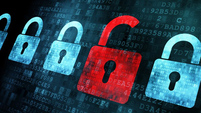
“Kellogg's management is especially worried that cyberattackers might try to steal the company's know-how, like the way it puts the ‘Snap, Crackle and Pop’ in Rice Krispies or the curve in Pringles potato chips, according to two people briefed on its computer defences,” wrote the WSJ. “Information on our recipes, including where they are stored, is proprietary,” said Kris Charles, a Kellogg spokeswoman. In a February 2014 securities filing, Kellogg said, “To date, we have not experienced a material breach of cybersecurity.” Looks like Kellogg’s is very happy with its tactic.
But is this approach hackproof? I turned to authors Richard Torrenzano and Mark Davis for insights from their book Digital Assassination. They let us know that cybersecurity experts have a name for the process of sealing a computer by taking it off from the internet — airgapping. It refers to the belief by certain ccybersecurity experts that “a computer system that is not connected to any other computer or to the Internet is safe”. But Torrenzano and Davis are not very impressed by airgapping. They say, “If evolution teaches us anything, it is that intelligent systems like to network. Of course no computer is going to extend its own cable and plug itself in. But a computer doesn’t have to network itself, because every computer comes complete with a parasite called a human, a creature with an irrepressible desire to network.”
RISKS OF A MERE NET CONNECTION
So airgapped computers may not be very safe because they are handled by humans, who have a tendency to network. But what happens if a computer is plugged into the internet and allowed to run without any human intervention? Torrenzano and Davis tell us that just such an experiment was conducted by a leading IT company. In step 1, “the company’s engineers purchased a garden-variety PC from a chain retailer”.
In step 2, “they installed in it the best off-the-shelf antivirus, anti-spyware protection, and firewall software packages available”. In step 3, “they connected this PC to the Internet. They did not use it for anything. They just tracked the flow of code into and out of the machine”. Any guesses on what happened next?
The authors wrote, “Within four hours the engineers detected the first ping by a potential hacker. In two weeks more sophisticated software from a computer in Canada slowly embedded itself in the PC and started running its own software. The Canadian computer soon set up links between the enslaved zombie PC and a computer in Singapore, which used the PC to attack a network in Poland.”
So despite the precautions taken, most computers invite security vulnerabilities merely by being connected to the internet. Imagine then the risks involved in the careless approach to security of most users?
Airgapping may have its benefits in certain circumstances. Here too, a lot depends on the discipline of the human handlers. No wonder many hackers stay invested in social engineering. For most ordinary people, however, nothing much can be accomplished at work or leisure without an internet connection, especially in these days when Cloud Computing is all the rage.
e.o.m

 RSS Feed
RSS Feed
